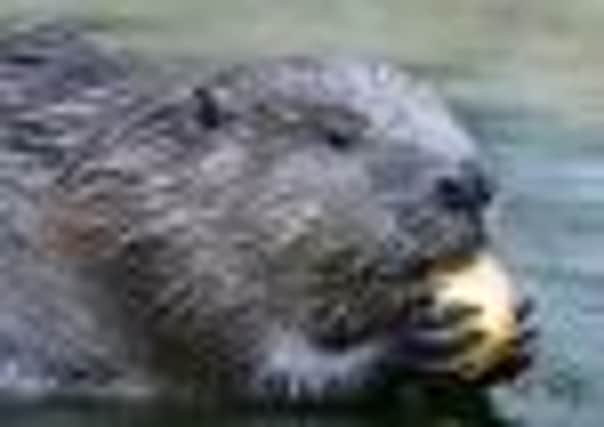Bavarian beavers wrecking fields and forests


A handful of beavers, believed to be from Bavaria, are thought to have escaped or been released into the wild about ten years ago, but in recent years their numbers have multiplied, raising concerns about the damaging impact they are having on the local rivers and forests.
Yesterday the Scottish Gamekeepers Association called on the Scottish Government to carry out further research on the beavers, which are classed as an illegal species, before deciding whether they should be allowed to remain in the wild.
Advertisement
Hide AdAdvertisement
Hide AdA spokesman said the animals are building lodges in waterways between Aberfeldy, Forfar, Dundee and Perth. Their continued presence could lead to major flooding on tributaries of the River Tay and forestry problems.
An earlier attempt by Scottish Natural Heritage to trap the beavers ended after three months with just one rodent caught. It was rehoused in Edinburgh Zoo where it died. Further attempts at trapping are thought to be unlikely because of the cost.
Environment minister Stewart Stevenson is expected to make a judgment soon on the future of the rogue beavers. One option put forward in an advisory paper by SNH is to let the rodents roam continue to free.
An official trial reintroduction of Norwegian beavers was launched in 2009 at Knapdale Forest in Argyll. Unlike their Bavarian cousins, the Norwegian beavers are considered a native species because they are the same animals that once thrived in Scotland’s rivers and forests.
An SNH report published last month said the Argyll beavers are so far having little effect on rivers and streams in the area where they’ve been released.
The SGA says that, unlike the Knapdale trial where the population appears to be stable, the robust colony in Tayside has grown to around 100. The SGA, which represents 5,300 members, says legitimisation of the rogue colony – without due research – could lead to major flooding and forestry problems.
It argues that the animals are already causing serious problems on agricultural land, rendering parts of fields unproductive, and damage to forestry on river-banks, with potential threats to public homes due to the destruction of natural flood defences.
SGA spokesman Bert Burnett said: “There has to be a pause for thought on this because people have no real idea as to the long term damage that could be caused to agricultural land and to trees which are needed to bind riverbanks in many areas.
Advertisement
Hide AdAdvertisement
Hide Ad“The freak rain storms we have been having recently have shown some areas to be more prone to flooding than others and, if there are beavers there, it is likely this will occur on a more regular basis.
“The genuine fear is that, if we leave things the way they are, then we could be creating a problem which may have to be solved, at great public cost, at a later date. We have armies of members who are assessing rivers every day and could relay the necessary information. We also have many people well versed in trapping techniques and we would be more than happy to offer assistance.”
The SGA says some farmers, where beavers have taken up residence, are already experiencing problems with field flooding and blocked drains.
One farmer in Angus is having to fell beaver lodges weekly on an adjacent burn to prevent large-scale flooding, with the animals regularly raising the water level by over a foot. “If I wasn’t having flood problems, I would be happy for the beavers to stay, but I don’t honestly see how we can carry on with it,” he said. “They have caused significant damage.”